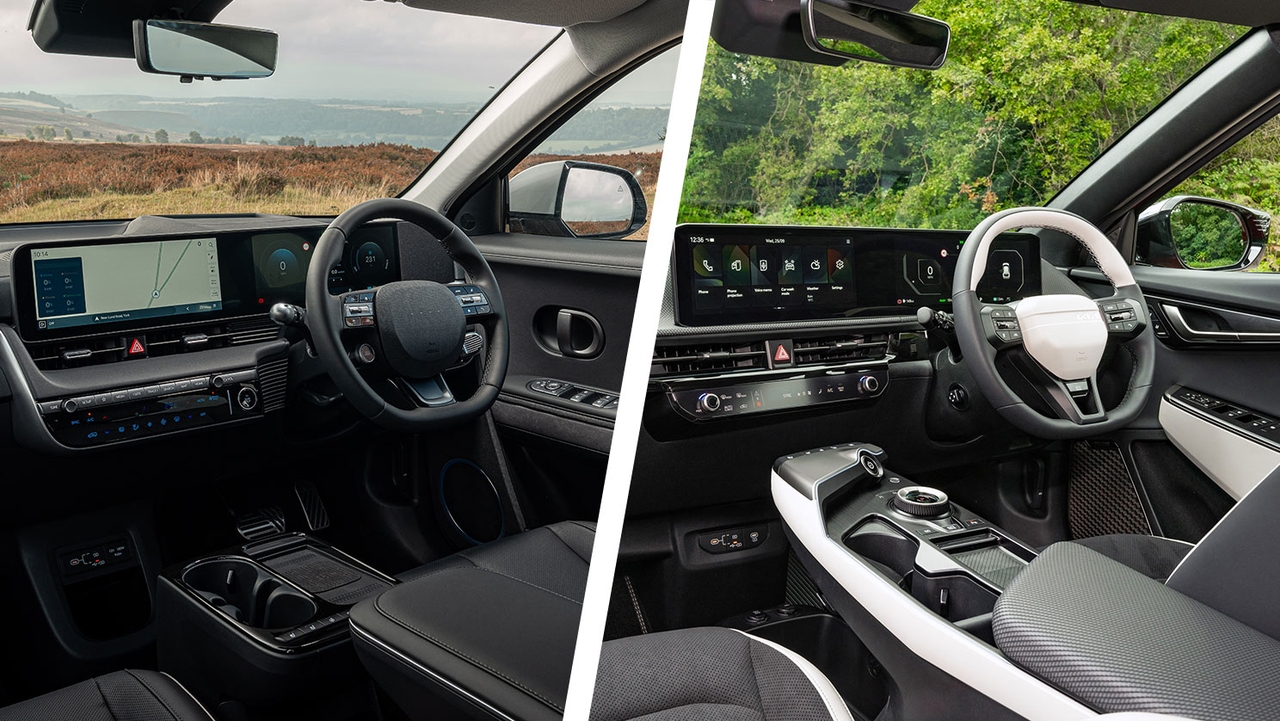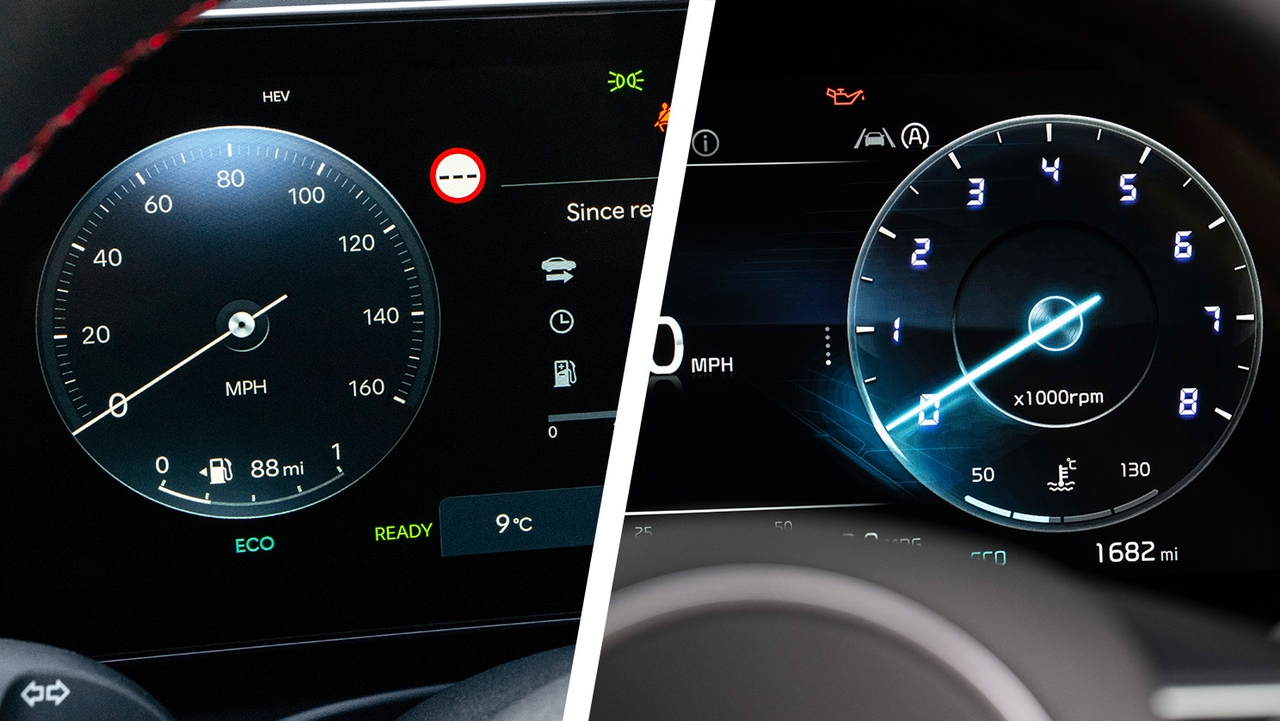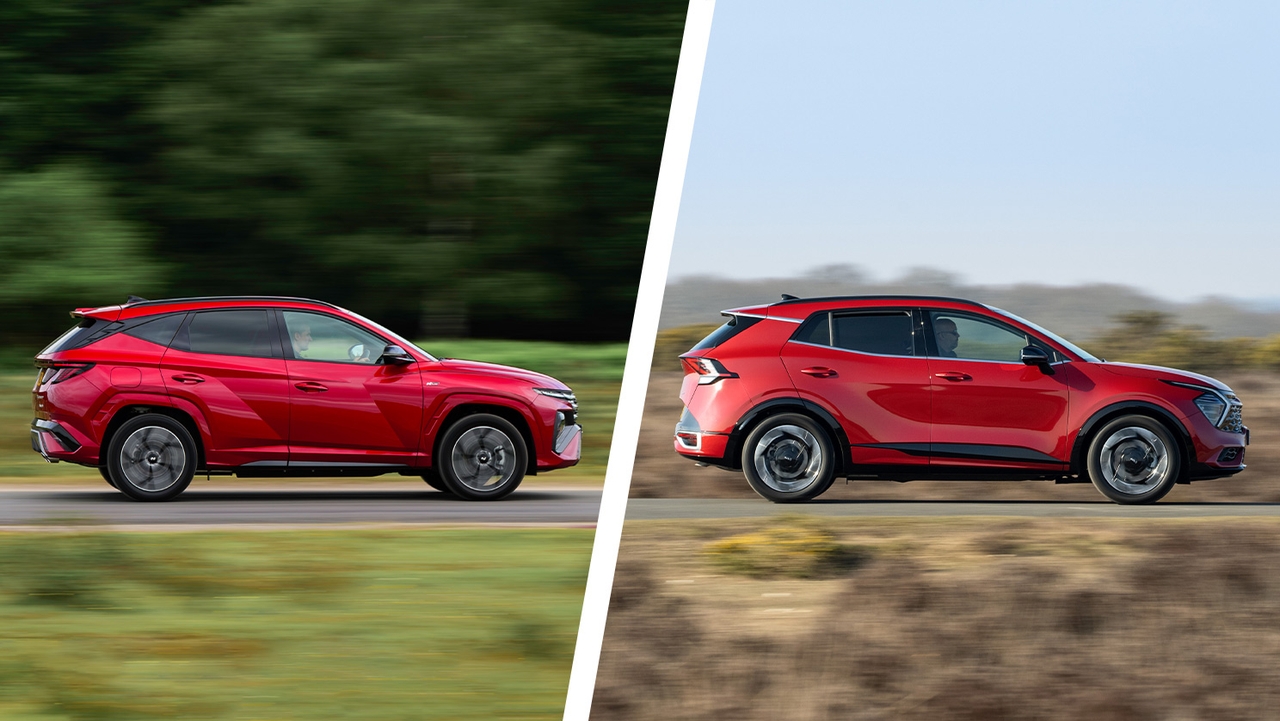Hyundai and Kia are South Korea's largest and most successful carmakers.
They've both exploded in popularity around the world. First, by offering better value for money than their rivals – then by beating them with ultra-modern designs and cutting-edge tech.
Let's compare Hyundai and Kia side-by-side, looking at their design, engines and reliability, so you can pick the brand that'll fit you best.
Hyundai vs Kia compared
| Hyundai | Kia |
Pros:
| Pros:
|
Cons:
| Cons:
|
Design

Some brands – especially those from Germany – meticulously craft corporate 'looks' that they apply wholesale to their entire range. This cements a brand identity but you end up without many distinctive-looking models. Not so with Hyundai and Kia. These companies are both happy to break the styling mould – not just setting them apart from rival cars, but also from other models within their own lineups.
Looking first at Hyundai, we see wildly different styling approaches in its range. There's the angular, '80s-inspired Ioniq 5, but then you'll find ultra-modern, swoopy designs on the Ioniq 6 and Ioniq 9. Looking beyond Hyundai's electric cars, you'll find the Kona SUV with its distinctive light bar spanning its front end, while the larger Tucson has a faceted, insect-eye-like design, and the even bigger Santa Fe has its own blocky look that sets it apart from the rest of the lineup.

Kia also has a lineup full of unique-feeling designs. Cars like the EV3 and EV9 share a similar aesthetic with upright headlights and slim front grilles, but they feel unrelated to the pod-like look of the EV6 or the sleeker styling of the petrol-powered Ceed hatchback. There's a little more alignment in Kia's popular SUV range with the seven-seat Sorento and the facelifted five-seat Sportage now having a clear family resemblance.
Comparing cabin designs, Hyundai models tend to lean a little more luxurious, with softer surfacing and plush materials as you head up the trim range. Kia cars, on the other hand, usually look a touch more blocky and utilitarian, although much of the underlying hardware is the same as their Hyundai counterparts. You'll find plenty of Kia models in GT-Line trim – similar to BMW's M Sport trim – which brings bigger alloy wheels and sportier styling, plus sports seats and a racy steering wheel. Both brands use sharp and responsive touchscreens for their infotainment systems, but we've found they sometimes overload their menus with graphics and fonts.
Engines and driving

There's very little to compare the two brands here as they effectively share engines as well as hybrid and electric vehicle tech. As a result, the experience behind the wheel is broadly the same between the two companies if you select equivalent models with the same engine setup. Diesel engines have been mostly banished from the lineup – although you can still get a 2.2-litre unit in the Kia Sorento – leaving a choice of mainly petrol, mild-hybrid, full-hybrid, plug-in-hybrid and full EV options.
Many medium and large models across the two lineups now offer full, self-charging hybrid setups, or plug-in hybrids (PHEVs) for customers with access to EV charging. These are great choices for drivers who cover a wide range of urban and long-distance journeys if they're not ready to swap over to a fully electric model. Hyundai and Kia PHEVs enjoy low Benefit-in-Kind (BiK) rates, so might be a good choice for company car buyers. If you have off-street parking, Hyundai and Kia EVs are some of the longest-range models on sale, with cars like the Kia EV3 offering excellent longevity for the price.
In short, you'll find very few differences if you're looking under the bonnet. Spend some time behind the wheel in a selection of models from both companies, and you'll find the on-road setup is pretty similar too. That said, on average, Hyundai tends to set its cars up a fraction softer, with lighter controls and a little more body roll, while Kia errs marginally on the sportier side, with firmer suspension and quicker turn in. These are broad brush strokes, however, so why not read our Hyundai reviews or our Kia reviews to find out what each model is like to live with.
Price

Taken as a rough average, Hyundai models tend to be a little more expensive than their Kia counterparts, although the difference is usually just a few thousand pounds either way. For example, you'll find cars like the Kia Ceed and Kia Sorento are a little cheaper to buy brand new than their direct equivalents, the Hyundai i30 and Hyundai Santa Fe respectively.
However, this is only a vague rule of thumb as there are examples where this is reversed. For instance, the Kia EV6 is priced a fraction higher than the Hyundai Ioniq 5 it shares its hardware with – and that's before you consider the Ioniq 5 also has more a more affordable entry-level model that substantially undercuts the higher-spec Kia.
Reliability
These are two of the most reliable brands on sale with both Hyundai and Kia regularly scoring high positions in owner reliability surveys. What's more, because so much mechanical hardware is shared between the two brands, both equally benefit from the years of development that got them to this stage, and replacement parts should be readily available.
Hyundai and Kia are clearly confident in the build quality of their cars, too, as both offer factory warranty cover that's longer than the industry standard. Hyundai offers a standard five-year factory warranty with no mileage limit, while Kia outstrips this already generous offering with an excellent seven-year factory warranty with a 100,000-mile distance limit.
Which is best?

In practice, it's a good thing that both Hyundai and Kia are selling cars, as it means there's ultimately more choice for drivers and more competition between brands. The two marques are so similar in a lot of ways that there's no real point trying to pick which is best. Some buyers may prefer the sleeker, premium look found on Hyundai models, while others will prefer the slightly better affordability and warranty coverage offered on Kia's lineup.
Read our full Hyundai reviews or our Kia reviews to learn what each individual model is like to live with. Once you've found the versions you like best, search thousands of great-value nearly new and used cars for sale at Motorpoint.

































